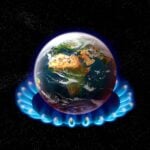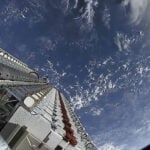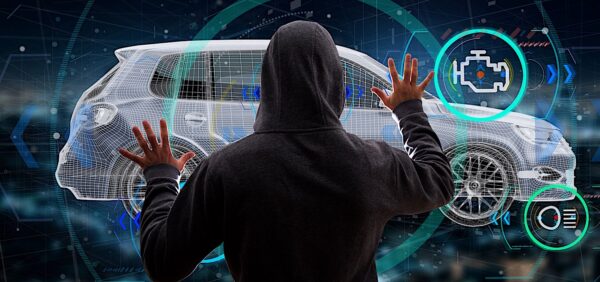As humanity continues to reach new heights in space exploration, the burgeoning space mining market is expected to thrive over the coming years. With a projected worth of USD 1.99 billion by 2027 and a CAGR of 14.41%, asteroid mining has been heralded as a potential “new gold rush.” [1]
AstroForge, an unmanned mission related to commercial asteroid mining, is set to launch soon, prompting discussions on the venture’s viability. This article evaluates whether the potential returns justify these astronomical investments.
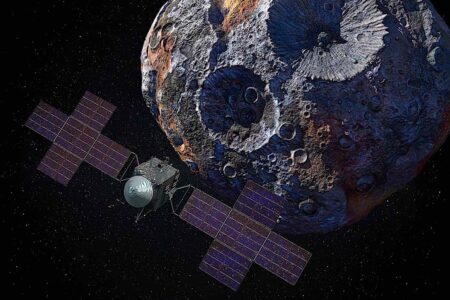
What is asteroid mining?
Asteroid mining refers to the extraction of valuable resources such as water, metals, and minerals from celestial bodies like asteroids and comets. Utilizing specialized spacecraft for surveying, mining, and transporting resources back to Earth or other off-world locations (such as space stations), asteroid mining is close to becoming a reality due to advancements in space technology and robotics.
Why is Asteroid Mining Being Considered?
The consideration behind asteroid mining lies in its potential long-term benefits compared to terrestrial extraction methods.
Cost
In recent times there has been an increase in production costs for traditional earthly mines. Costs have risen due to various factors, such as strict labor laws and environmental regulations. For example, by 2022 gold-mining industry’s average all-in sustaining costs (AISC) reached record highs of US$1,276/oz., representing an 18% year-on-year rise. Disruptions to the supply chain caused by the pandemic in 2020 further exacerbated production costs. [2]
Initially, asteroid mining seems like an expensive endeavor. Yet, considering the potentially vast wealth offered by these celestial treasure troves—both financially and technologically—it could prove well worth the investment, yielding extraordinary returns.
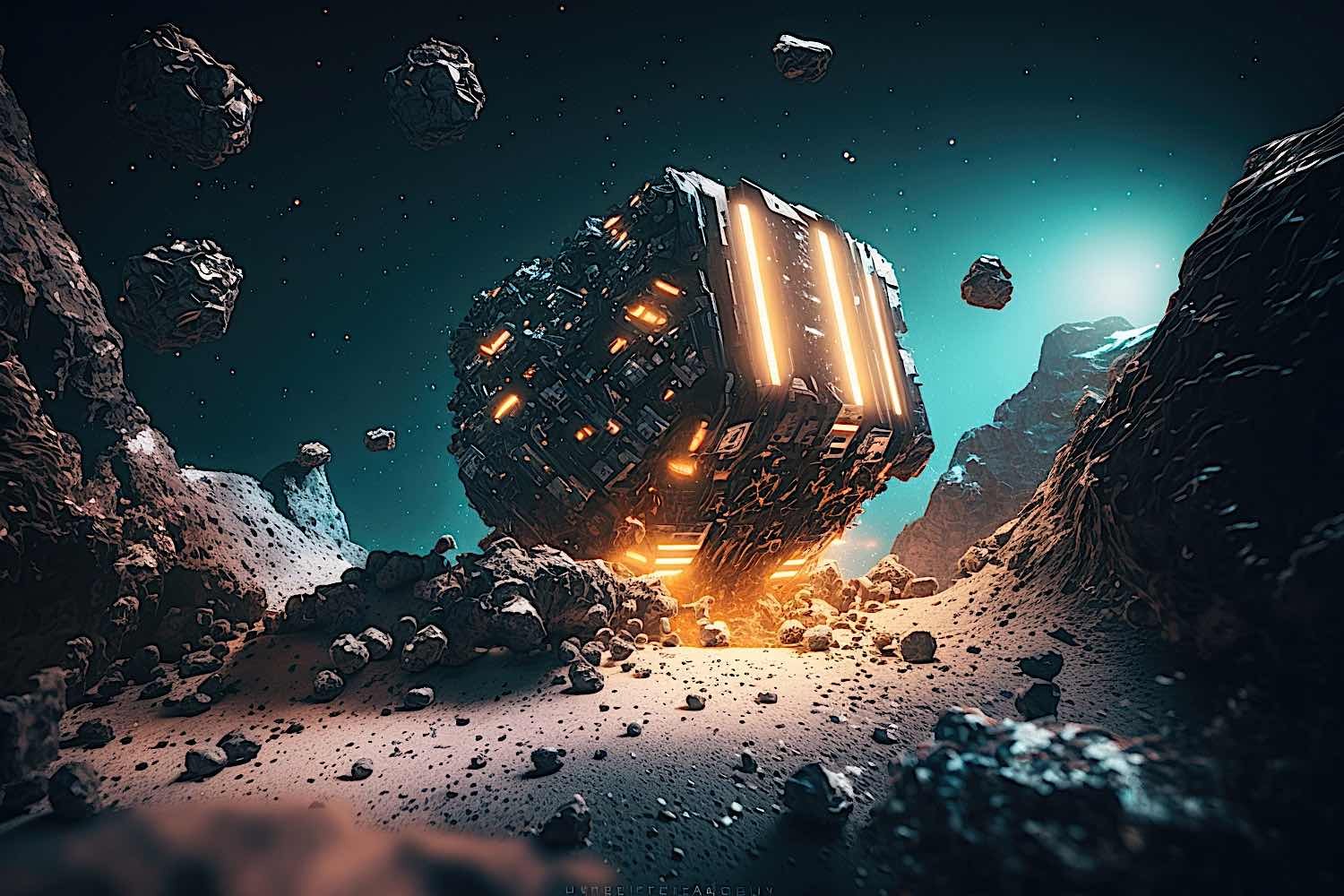
Environmental Impact
Conventional extraction methods can cause severe damage to ecosystems through deforestation, soil erosion, and water pollution. A prime example is lithium mining, which requires lithium-ion batteries that power electric vehicles and store renewable energy. [3] These rely on open-pit mines, often disrupting local water supplies and damaging flora and fauna. Asteroid mining bypasses these debilitating consequences by collecting resources from extraterrestrial sources. Since any extraction would occur in space, it would cause no adverse effects on Earth’s fragile ecosystems.
Scarcity and Abundance
Earth’s finite resources are dwindling at an alarming rate due to overconsumption and a growing global population. Asteroid mining offers a promising alternative as a sustainable source of minerals. Rigorous efforts have been made to conserve resources through recycling programs and the adoption of renewable energy sources. Nevertheless, asteroids could significantly supplement our planet’s reserves. Geologists estimate that nearly 9,000 asteroids measuring larger than 36 meters (150 feet) in diameter consist of iron ore, nickel, and precious metals—at concentrations much higher than those found on Earth. This amounts to a market valued in trillions of dollars. [4]
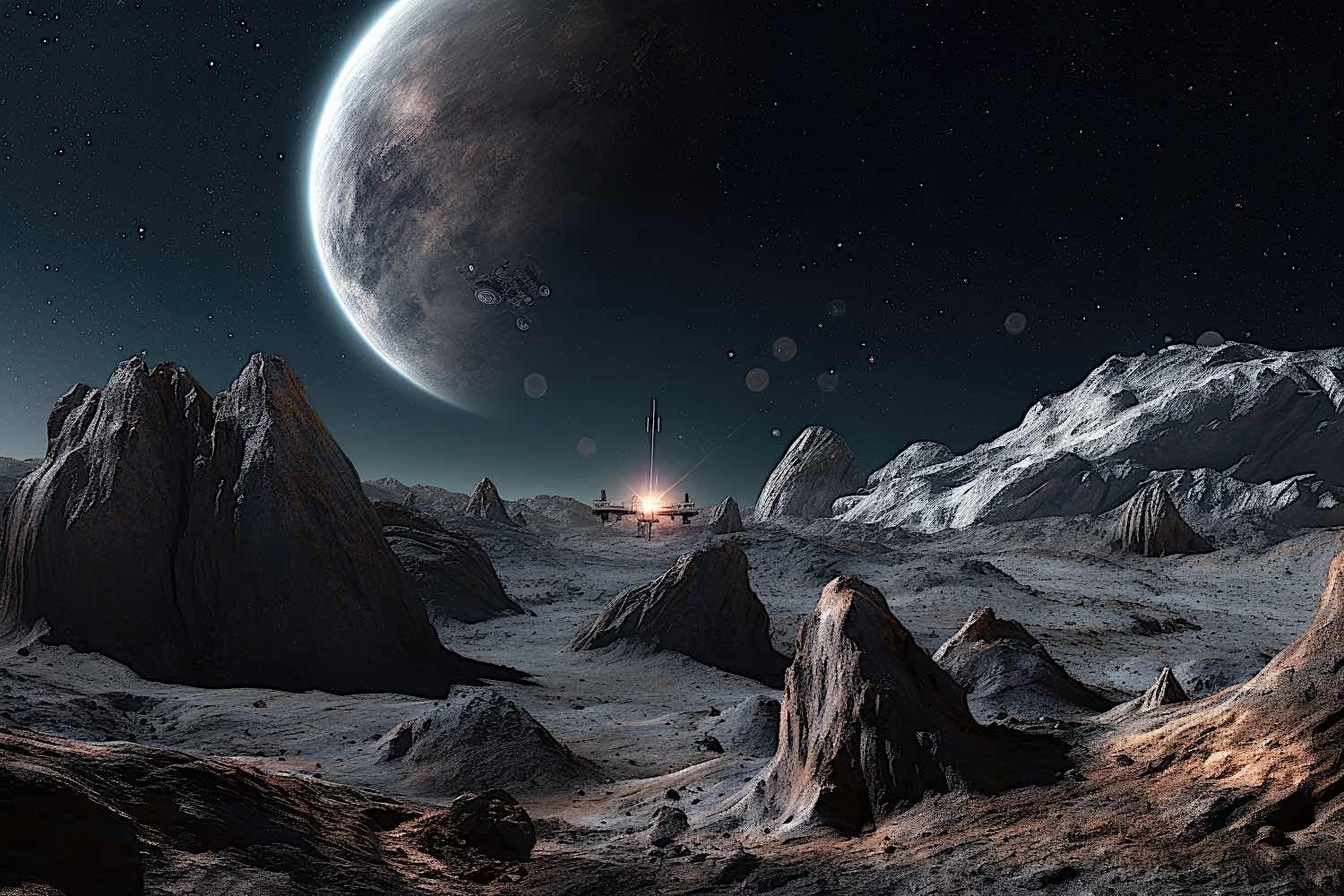
Prevent Human Exploitation
Aside from benefiting the environment and potentially aiding resource concerns, asteroid mining may also mitigate human exploitation. It is, unfortunately, prevalent within the terrestrial mining industry. Instances of child labor abuse and vulnerable population exploitation have long marred traditional mining practices. Extraterrestrial ventures eliminate these risks by conducting operations solely off-world. Robotic miners can perform these tasks without endangering human lives or contributing to exploitative practices.
Interesting Mining Sites In Our Solar System
The variety of celestial bodies within our solar system offers diverse opportunities for resource collection—from metallic-heavy asteroids to mineral-rich comets. Notably distinguished as Near Earth Objects (NEOs) or Main Belt Asteroids (MBAs), each body presents unique advantages based on its proximity to Earth or composition abundance factor. From Class-M asteroids to moon-like bodies, the universe offers many interesting sites for mining.
The Moon
NASA plans for lunar expeditions pave the way for the extraction of helpful resources such as water, helium-3, and rare earth metals. Water could be employed as rocket fuel, allowing for efficient transport between the Moon and Earth. Helium-3, an isotope scarcely found on Earth, could be utilized in future fusion reactors to generate clean nuclear energy. [5] Additionally, the discovery of rare earth metals may hasten the development of advanced technologies while reducing dependency on terrestrial mining activities.
Asteroid Psyche 16
Asteroid Psyche 16 has garnered significant interest due to its suspected composition. Astronomers hypothesize that this celestial body contains a wealth of precious metals, inviting lucrative mining endeavors. Discovered in 1852 by Italian astronomer Annibale de Gasparis, Psyche 16 is estimated to be primarily composed of iron and nickel but may also harbor gold and platinum-group elements.[6]
Located within the Main Asteroid Belt between Mars and Jupiter, mining Psyche 16 would require substantial investments in technology and infrastructure for space travel. But with an approximate worth exceeding $10 quintillion—beyond any conceivable terrestrial extraction site’s value—the case for mining this marvel becomes increasingly compelling.
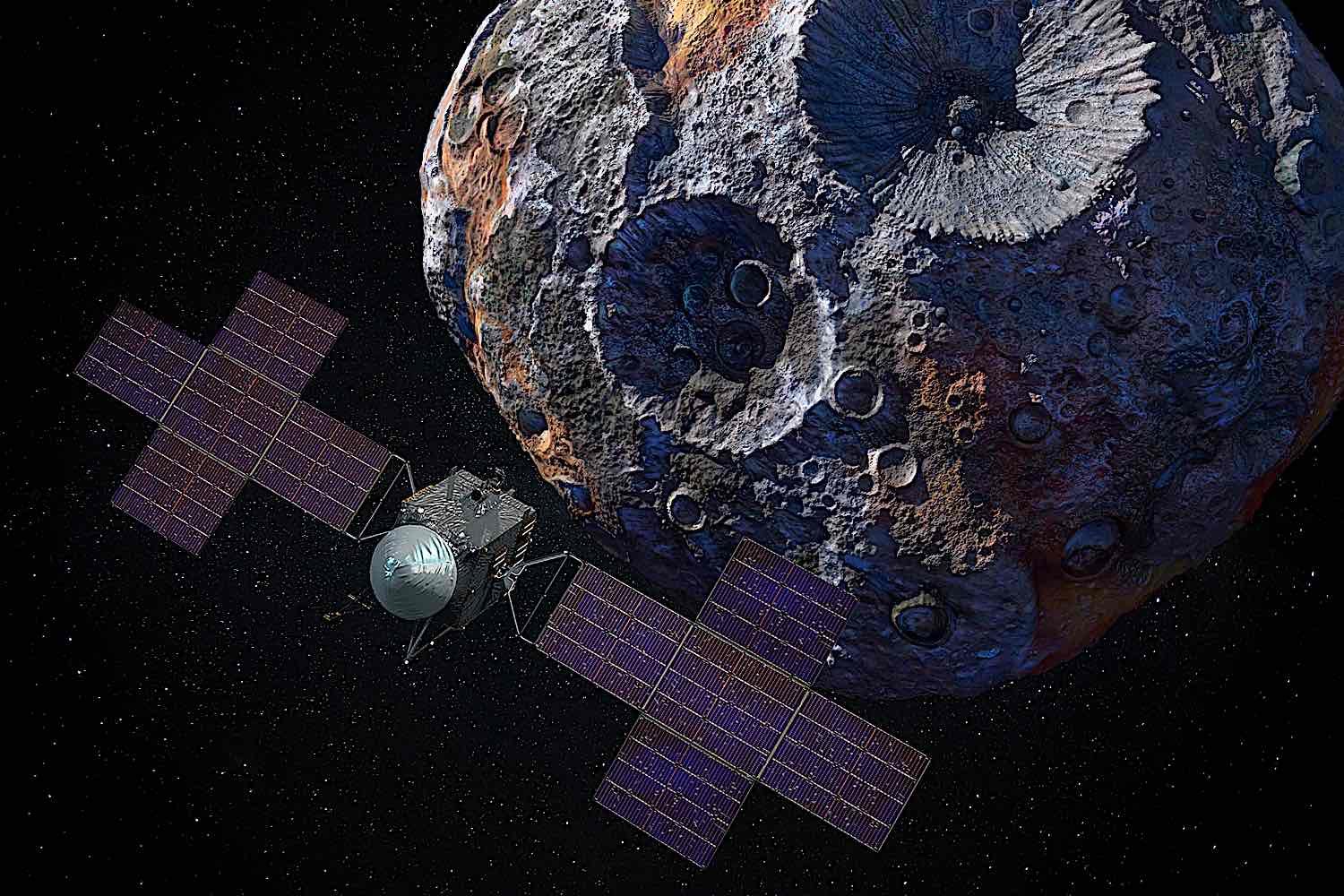
The Latest Developments in Asteroid Mining
While Psyche 16 may still be years away from being mined, recent developments in space travel and the continued advancements in artificial intelligence create a more tangible possibility of exploiting resources beyond our planet.
AstroForge, an up-and-coming startup, is making significant progress in the field of asteroid mining. They do so while demonstrating the increasing accessibility of space exploration. For instance, its relatively modest $13 million seed funding secured in 2022 is minimal compared to behemoths like NASA and SpaceX. Instead, AstroForge’s competitive advantage comes from utilizing the reusable rocket technology offered by SpaceX. [7]
First Voyage: The Test Run Around Earth’s Orbit
The primary objective of AstroForge’s initial mission is to exhibit its ability to process asteroid-like materials under Zero-G conditions. Their strategy involves hitching their payload on a SpaceX Falcon 9 rocket, sharing its space with other projects bound for Earth’s orbit. Once there, AstroForge plans to release an emulated asteroid material to demonstrate their refining capabilities in space.
AstroForge’s Brokkr-1 will be tested during this demonstration by vaporizing the material and sorting through the disintegrated particles in search of valuable resources. In effect, it is similar to what it would undertake during a real mission.
Second Voyage: A Genuine Deep Space Mission
The second mission planned for October takes a more serious approach. Another SpaceX rideshare will transport AstroForge toward lunar orbit. In collaboration with Intuitive Machines, AstroForge intends to launch Brokkr-2, designed for deep-space travel. As Intuitive Machines’ Nova-C lander proceeds with its lunar landing protocol, Brokkr-2 will separate and head toward deeper space where an undisclosed target asteroid awaits it. The target asteroid is situated roughly 35.4 million km (22 million miles) away from Earth and requires approximately 11 months for Brokkr-2 to reach it.
These ambitious projects are part of AstroForge’s ultimate aim: refining platinum-group metals (PGMs) from asteroids while reducing both the financial burden associated with mining these valuable metals and the vast amount of carbon dioxide emissions generated from Earth-based mining operations. According to CEO Matthew Gialich, if the initial two missions prove successful, AstroForge plans to conduct a third mission, landing on the chosen asteroid, followed by a fourth mission designed to extract and refine the asteroid’s metals before returning to Earth. [8]
The Financial Feasibility of Asteroid Mining
Asteroid mining was once seen as an uneconomical venture due to the extraordinary costs associated with space travel. Launching a single rocket could cost hundreds of millions or even billions of dollars. Adding to that, consideration must be given to transporting necessary materials for building mining equipment in space and fueling costs for maneuvering spacecraft. Not to mention the inherent risk of mission failure leading to a complete loss of investments.
However, recent advancements have made asteroid mining seem more affordable than ever before. Companies such as AstroForge are leveraging these new developments to turn asteroid mining into a viable option. By utilizing reusable rockets, 3D printing designs, and other efficient space technologies, startups, and public companies aim for profitability in this emerging field.
Determining a precise dollar value for potential profits from asteroid mining is challenging at best. Predictions range from billions to trillions of dollars. Asteroids hold the possibility of containing vast amounts of resources such as gold and platinum-group metals. These could be incredibly valuable when brought back and utilized on Earth. Nonetheless, concrete profit forecasts will remain elusive until we successfully explore an asteroid firsthand.
The Pursuit of Knowledge
The overarching priority for scientists right now is acquiring knowledge about asteroids’ composition and behavior. It is the only way to make informed decisions about their potential for profitable mining operations. Consequently, numerous spacecraft are being built to study asteroids.
It all started with The Japanese Hayabusa mission. [9] Launched in 2005, it successfully reached an asteroid 300 million miles away from Earth—exploring its surface and collecting samples—all of which have expanded our understanding of these celestial bodies. NASA’s OSIRIS-REx mission, initiated in 2018, has been another key source of asteroid data. Aimed at gathering samples from an asteroid named Bennu, it generates valuable insights that feed into the potential for asteroid mining development. [10] The recent DART (Double Asteroid Redirection Test) mission is yet another example of how studying asteroids can benefit not only our understanding but also enhance our planetary defense strategies. It collided with an asteroid head-on and successfully altered its trajectory. NASA gained crucial knowledge on how to act if faced with a potential collision while making advancements in mining techniques. [11]
Finally, the Exploitation des Ressources des Corps Celestes (ECOCEL) database is a vital project in the field. Run by French researcher Irina Kovalenko, it revolves around prospective mining companies’ two most critical aspects—ease of accessibility to asteroids and composition analysis. [12] The team is creating a database that will provide a detailed outline of these two aspects of each asteroid, intending to help miners decide which asteroid is most viable for their mission. This knowledge might be vital in unlocking asteroid mining as a viable niche for industries on Earth.
Conclusion
As AstroForge prepares to launch its first mission related to commercial asteroid mining, industry stakeholders will closely watch this groundbreaking endeavor’s trajectory as both a technological marvel and a potential solution to modern resource extraction challenges.
While initial costs may seem formidable at first glance, the potential economic gains combined with environmental preservation factors create a compelling argument in favor of asteroid mining viability. The alleviation of human exploitation concerns further lends weight to these extraterrestrial endeavors as ethical solutions for sustainable development.
Only time will tell whether asteroid mining is a viable option for the future of industries on Earth. But with the advancements in technology and the determination of several key players, we may soon find ourselves looking to space as an answer to our resource scarcity challenges.
Notes and Sources
[3] https://news.climate.columbia.edu/2023/01/18/the-paradox-of-lithium/
[4] https://www.mining.com/asteroid-mining-startup-astroforge-readies-first-mission/
[5] https://www.hou.usra.edu/meetings/lunarsurface18/pdf/6001.pdf
[6] https://solarsystem.nasa.gov/asteroids-comets-and-meteors/asteroids/16-psyche/in-depth/
[8] https://www.astroforge.io/
[9] https://www.jpl.nasa.gov/missions/hayabusa
[10] https://www.asteroidmission.org/
[11] https://www.space.com/space-mining-grinding-into-reality
[12] https://phys.org/news/2023-05-asteroid-miner-database.html

